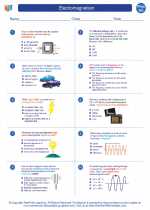Understanding Friction
Friction can be classified into several types, including static friction, kinetic friction, rolling friction, and fluid friction. Static friction occurs between surfaces that are not moving relative to each other, while kinetic friction occurs between surfaces in relative motion. Rolling friction is the resistance to motion when an object rolls on a surface, and fluid friction arises when an object moves through a fluid, such as air or water.
The magnitude of the frictional force can be calculated using the formula:
Ffriction = μN
where Ffriction is the frictional force, μ is the coefficient of friction, and N is the normal force acting perpendicular to the surfaces in contact.
Factors Affecting Friction
Several factors affect the magnitude of friction, including the nature of the surfaces in contact, the roughness of the surfaces, and the normal force. The coefficient of friction depends on the materials of the surfaces and can vary with temperature and surface conditions.
Applications of Friction
Friction has both positive and negative effects. It is essential for walking, driving, and the operation of brakes and tires. However, friction also causes wear and tear on surfaces and reduces the efficiency of machines and engines.
Study Guide for Friction
- Understand the concept of friction and its significance in everyday life.
- Learn the different types of friction and their characteristics.
- Be able to calculate the frictional force using the formula Ffriction = μN.
- Explore the factors that affect the magnitude of friction and how they influence the coefficient of friction.
- Study the applications of friction and its role in various mechanical systems.
- Practice solving problems related to friction and its effects on motion and mechanical systems.
By mastering the concept of friction and its applications, students can gain a deeper understanding of the physical world and its interactions.
[Friction] Related Worksheets and Study Guides:
.◂Physics Worksheets and Study Guides High School. Electromagnetism

 Worksheet/Answer key
Worksheet/Answer key
 Worksheet/Answer key
Worksheet/Answer key
